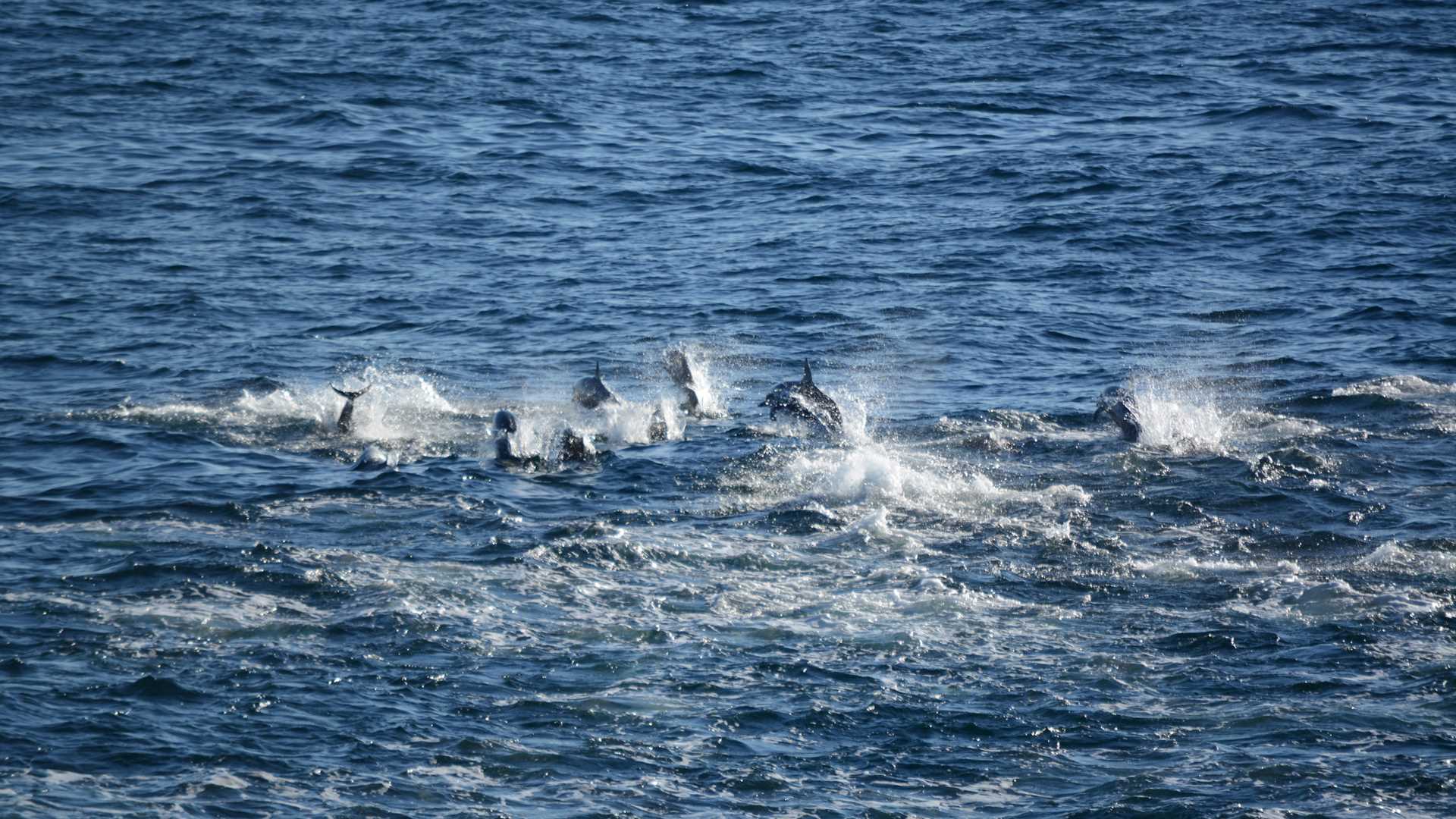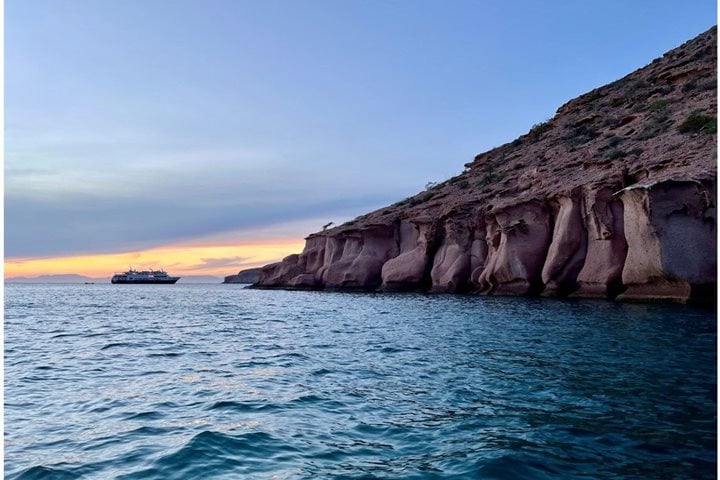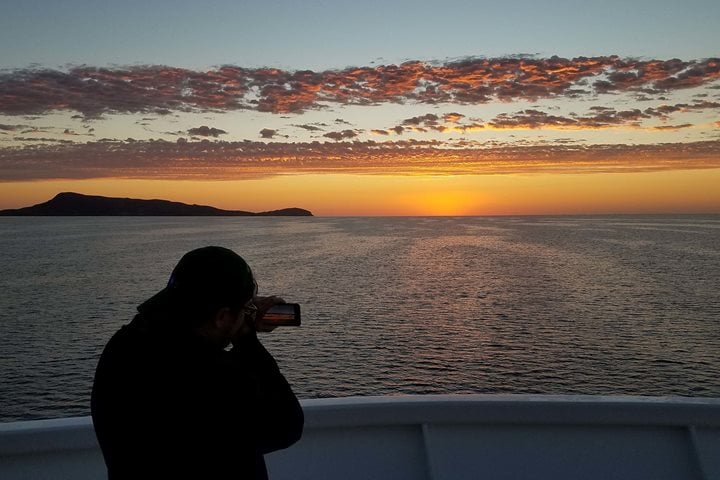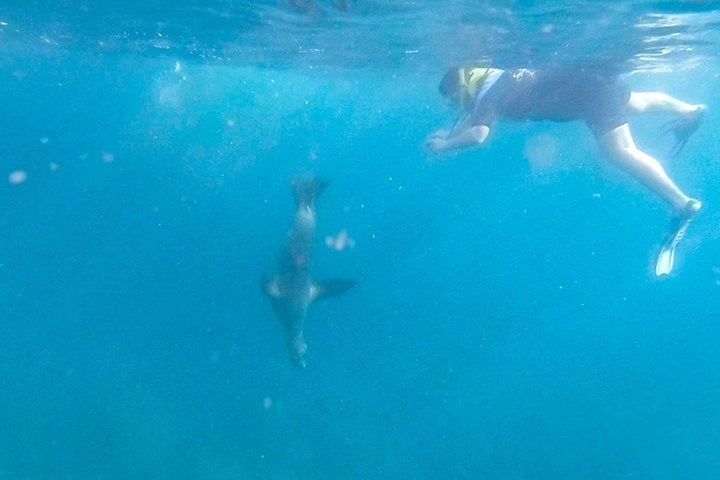The first day onboard National Geographic Venture was a wonderful last day of 2018. After leaving the dock in La Paz last night, our officers took the ship around the outer edge of Isla San Jose – this gave us a clear, unbroken view of the eastern horizon as the sun rose. With the energetic Barre + Yoga class on the sundeck, those looking for a calmer start to the day wandered to the bow where the natural history staff members were all waiting for the sun to break the horizon. As we stared, we were graced with a rare phenomenon – the green flash – that is normally only observed at sunset, if at all. Requiring very specific atmospheric conditions, the green flash occurs with a cloudless sky and unbroken sightline to the sun as it peaks above or sinks below the horizon.
After breakfast, we were in for another treat – naturalists had spotted dolphins in the distance! As National Geographic Venture inched closer, they debated which species they may be, whether they had dorsal fins, and if they would
Our interaction with them was quite special, as we watched them porpoise around and leap 10 feet into the air as they flipped over and over. After half an hour, we turned away to let them go to sleep, and we continued to our anchorage for the afternoon. At Puerto Los Gatos, the deck team offloaded every single water toy onboard National Geographic Venture. We hiked, kayaked,
After dinner, the forward lounge was transformed into a center for festivities for the new year. Decorative hats and headbands were distributed, a photo booth complete with props was stationed in the library, and posters to document wishes and resolutions were hung around the room. With a festive soundtrack and 40-year old video of Dick Clark’s Rockin’ New Year’s playing, we rang in the New Year at East Coast Time – we have an early morning tomorrow!







